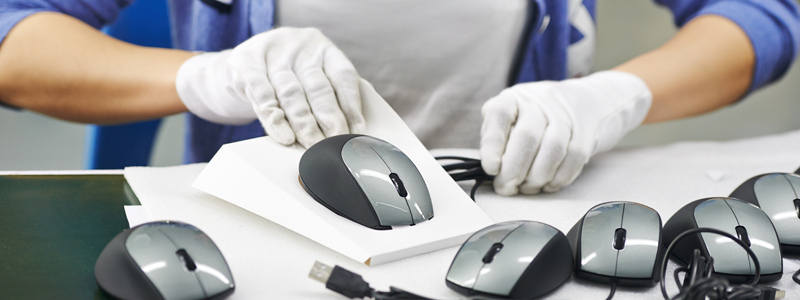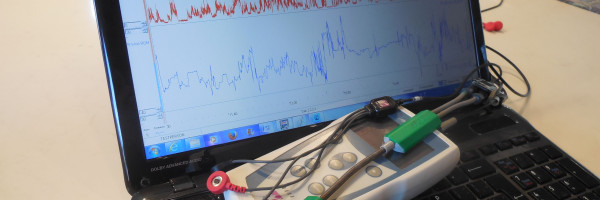Office Ergonomics Workshops
Towards a better understanding of Office Ergonomics
The half day, full day and / or two day workshops will provide participants with a systematic overview of ergonomic approaches, methods and techniques used to conduct an ergonomic risk assessment, measure an individual’s function and identify, analyze, evaluate and treat ergonomic risk factors within the office setting.
A variety of office ergonomic challenges, from “simple” to “complicated” to “complex”, will be covered. Videos, demonstrations and case studies will be utilized to assist participants in incorporating ergonomic best practices into their clinical setting.
Learning objectives
By the end of this workshop, participants will be able to:
- Categorize office ergonomic challenges into “simple”, “complicated” or “complex” challenges and accordingly identify best practices to eliminate, and if that is not practicable, minimize the ergonomic, human factors or occupational risks associated with each type of challenge.
- Identify the signs and symptoms of Musculoskeletal injury (MSI) / Repetitive Strain Injury (RSI) and / or Activity-acquired Soft Tissue Disorders (ASTD).
- Review the anatomy and biomechanics of involved musculoskeletal structures.
- Understand the 3 processes of “risk assessment”.
- ‘Risk Identification’ – Find, recognize and describe risk and risk criteria / risk thresholds.
- ‘Risk Analysis’ – Understand the nature, sources, causes, impacts and consequences of risk. Examine current controls/treatments from the perspective of the “hierarchy of controls”. Estimate level of risk.
- ‘Risk Evaluation’ – Determine whether risk is acceptable or tolerable.
- Review “Ergonomic Requirements” from “Occupational Health and Safety Guidelines”.
- Determine how, what, who, where and when to “work sample” for an office assessment.
- Conduct video postural analyses of work.
- Demonstrate the use of ‘surface electromyography’ to measure muscle activity and to show how muscles work when performing office work.
- Demonstrate how an incorrect workstation set-up or office equipment (e.g. computer mouse, keyboard and office chair) that is too big or to small for an individual can lead to muscle overuse and fatigue.
- Demonstrate the use of ‘electrogoniometry‘ to measure the extent and proportion of awkward postures.
- Demonstrate the use of ‘human digital imaging‘ to identify potential risks within a virtual office.
- Review limitations of ergonomic approaches, methods and techniques that are commonly used to measure function (e.g. manual goniometer to measure range of motion and observation to estimate ‘static loading’ and the effectiveness of ‘microbreaks’).
- “Triangulation” or “cross verification” of ergonomic findings.
- Identify a structure for report writing or documenting the identification, analysis and evaluation of risk.
- Understand the awkward postures afforded by the physical design features of commonly prescribed workstation components e.g. vertical computer mice.
- Substantiate the above in light of available medical-scientific literature.
Workshop topics
Day 1
- Complexity of office ergonomic challenges – A systematic approach
- Signs and symptoms of MSI, RSI and ASTD.
- Basic Anatomy and Biomechanics of involved musculoskeletal structures
- Risk Assessment – Definition of terms
- Risk assessment – An overview
- Risk identification – Risk criteria / risk thresholds
- Risk analysis
- Risk evaluation
- Risk treatment – Hierarchy of controls
- Regulatory framework – OHS guidelines: Ergonomic requirements
- Office work sampling – The who, what, where, when and how
Day 2
- Ergonomic approaches, methods and techniques and their limitations
- “State of the art” ergonomic approaches, methods and techniques
- “Surface electromyography” – Measuring muscle activity
- “Electrogoniometry” – Measuring range of motion
- “Human digital imaging” – Identify potential risk in a virtual office
- “Triangulation” (“cross verification”) of assessment findings
- Vertical computer mice – Awkward postures afforded by design features of vertical computer mice.
- Report structure – Auditing the risk assessment processes
Target audience
Participants who wish to improve their ability to understand ergonomic best practices, and effectively eliminate, and if that is not practicable, minimize the risk of MSI for workers working in an office.
Presenter
Eddie Everett, OT
Eddie is an occupational therapist from British Columbia with over 36 years of experience who has completed a Masters of Science and Technology in Ergonomics; Graduate Diploma in Occupational Therapy; Bachelor of Science Degree; and Certification in Assessment of Motor and Process Skills. In addition to his occupational therapy professional affiliations with the Canadian Association of Occupational Therapists of British Columbia (COTBC) and the Canadian Association of Occupational Therapists (CAOT), he is also a member of the Association of Canadian Ergonomists (ACE).
He has been an ergonomic consultant for Ergo Solve for the past 14 years and, prior to that, he has worked at Workers Compensation Board of British Columbia (WorkSafeBC) as a functional evaluator; vocational rehabilitation consultant; clinical specialist occupational therapist in special care services for catastrophically injured workers; “permanent functional impairment” clinician; and occupational therapist in the medical rehabilitation program. He has also worked with people with chronic and serious mental illness in hospital and community settings; lectured and prepared course content for the Department of Occupational Science and Occupational Therapy at the University of British Columbia; and submitted expert oral and written testimony on occupational risk factors to WorkSafeBC Review Board and Workers Compensation Appeals Tribunal (WCAT).
If you would like to have a workshop within your region of Canada, please let Eddie know by contacting him on 604-612-3650; or Email: Send an email to Eddie




